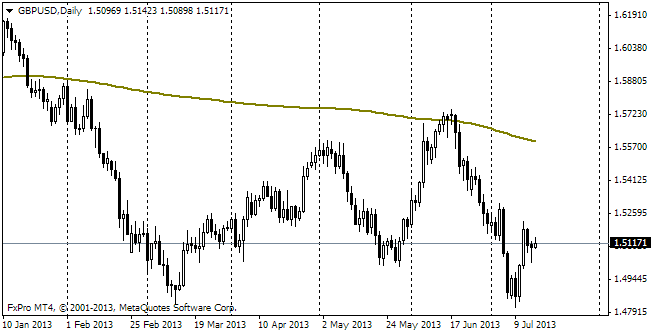EUR/usd
The US employment statistics again fell short of expectations. On Friday it was reported that in January non-farm employment grew by 113K after increasing by 75K a month before. BLS pins some blame on bad weather and in this case the rates may be quite better next month. Yet, a month ago there were similar opinions, which eventually proved to be wrong. The good news is that the traditional revision of statistics added over half a million to the employment rate and the last year's rate was revised up by 87K in total. The unemployment rate has again declined and now makes 6.6%, which is one tenth of a percent off the threshold rate, above which the Fed promises to maintain a soft monetary policy. The participation rate again came off the lows and made 63.0% in January after 62.8% in December. In October-November we observed a similar movement. As a result, the US dollar depreciated across the board. eurusd first shot up to 1.3640, then followed an almost 100% pullback, after which purchasing resumed, so the pair closed the week near 1.3640. Now trading is held at 1.3625. The downtrend, which has been in place since mid December, still holds good, its upper bound is now passing through 1.3650, which bulls are supposedly targeting at the moment. Close to this level there will probably be a fight, which will determine the pair's destiny for the coming weeks. Technically, getting higher will mean breaking of the downtrend, but to be absolutely sure about that we'll have to wait for consolidation above 1.37. As far as the news background is concerned, today will be a quiet day as all the stats scheduled for release are of secondary importance.
GBP/USD
The correlation between the sterling and the stock market contributes to a pullback in gbpusd after the employment statistics release. The British currency has appreciated by about a cent since Friday and is again above 1.64. Just like in case with the markets, the recovery is boosted by the preceding overselling in the markets. Now the markets are not that oversold, so the movements can be more cautious. The weekly agenda is headed by the BOE's quarterly inflation report, which comes on Wednesday. It may bring news about revision of the BOE's views on the statement of intent.

USD/JPY
The Japanese yen is falling against USD due to higher demand for risky assets. The pair is trading close to 102.50. The general sentiment regarding the pair is bullish, however we do not expect such a sharp pullback as at the end of the previous week. It is all because of making up for the oversold state of the markets, which we described earlier. The Japanese statistics don't show any significant improvement in the balance of payments, which may require a new portion of incentives in the coming months.

USD/CAD
The canadian dollar is making its way up while the country has started to release more statistics. usdcad is trading already at 1.1020, having won two figures from the maximum rates slightly over a week ago. The unemployment rate shrank from 7.2% to 7.0% in January, the labour market created 29.4K of new jobs, but, what is particularly important, the December decrease in full-time employment (-56K) has been almost set off by January's growth (50.5K).
